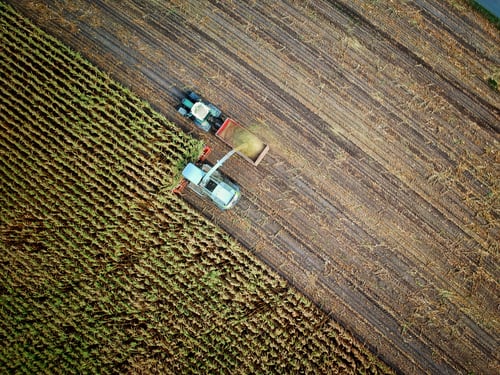Top Technologies in Precision Agriculture
The modern agriculture industry currently faces numerous challenges that have to be addressed. Above all, the biggest issue is the rapidly growing world population while the earth’s surface available for farming stays the same. Creating new farmlands means deforestation and environmental harm, making it necessary to learn how to maximize food production using the same land and other resources. The good news is that modern precision agriculture technologies have farmers’ backs enabling innovative solutions for achieving higher crop yields and profit on the same land and same or even fewer resources.
For the last decade, the market of precision tech has evolved significantly, with new technology investment washing it over. The variety of tools, offerings, and innovations still leave agriculture companies digesting the thought of what tech they should implement on their farmlands.
To help with that, we will discuss the top technologies the modern precision agriculture market has to offer.
Mobile Devices
The ubiquity of smartphones, which are now almost equal to computers in their capabilities, leads to more and more software companies making a mobile version of their product. Why wait to get back to the office when more and more information is available in the field?
The smartphone is all about mobility and efficiency in remote areas of the farm. The installation of specialized data collection tools and management programs makes this device even more useful for farmers. Storing data on a mobile device helps reduce paperwork and minimizes the chance of human errors. Mobile apps formalize the input of research or progress data. They also can geotag the data for specific areas of the field for more accurate and smart activities management.
Irrigation Management
The OECD states that farming accounts for over 70% of global water usage, which is an acute issue while the world faces drinking water shortages. That is why smart water use on farm sites is critical. And that is where irrigation management helps. Here is how that works.
Farmers can adopt centralized command-and-control tools to tell precisely when to water a particular field to prevent excessive water use. This allows for preserving water and land and crops from water erosion and water stress, respectively.
Modern smart irrigation systems are networks of sensors that are located throughout the agricultural area. These devices check the condition of the soil, control the level of its moisture, looseness, and monitor the saturation. In regions with negative indicators, the devices automatically irrigate the land, significantly simplifying irrigation management.
VRA Seeding
VRA (variable-rate application) approach in seeding is generally understood as even distribution of seeds in a row based on precise data on the state of different field zones. Knowing the characteristics of a particular area, the seeder itself, without human intervention, must reduce or increase the seeding rate.
Despite the seeming complexity, it is quite possible to bring the technology of differentiated sowing to life. Today the world market already offers a variety of robotic seeders. But to use a “precise” seeder effectively, you need to have an electronic map of the field with the data on its different zones productivity and other parameters that the seeder will rely on when sowing. For this purpose, growers can use farming software that collects and analyzes this data to offer ready-for-use electronic maps for VRA seeding.
Weather Modeling
Weather is a critical factor that determines the success or failure of agricultural enterprises. Its changes profoundly affect plants’ growth, development, productivity, and the need for water and fertilizing. Also, due to different climatic conditions, the reasons and practices for growing particular crops differ in other areas, even in the same season. Therefore, both short-term and long-term weather forecasts are essential.
Weather modeling aims to minimize the impact of threatening weather events and changes to take preventive measures timely. Luckily, modern farming software and devices provide growers with accurate and reliable weather data to improve decision-making. The data usually includes air and soil temperature, precipitation, wind speed, etc. All this can make farmers plan irrigation, tillage, and chemicals application based on weather conditions to prevent overwatering.
IoT
In terms of components, the largest share of the total IoT market in agriculture is hardware. The hardware segment is further subdivided into automation and control systems, detection and monitoring devices, control and navigation systems, drones, handheld PCs, displays, smart harvesters, LED grow lights, etc. This basically works as a “smart home” concept, where devices communicate with each other and the homeowner via the Internet.

